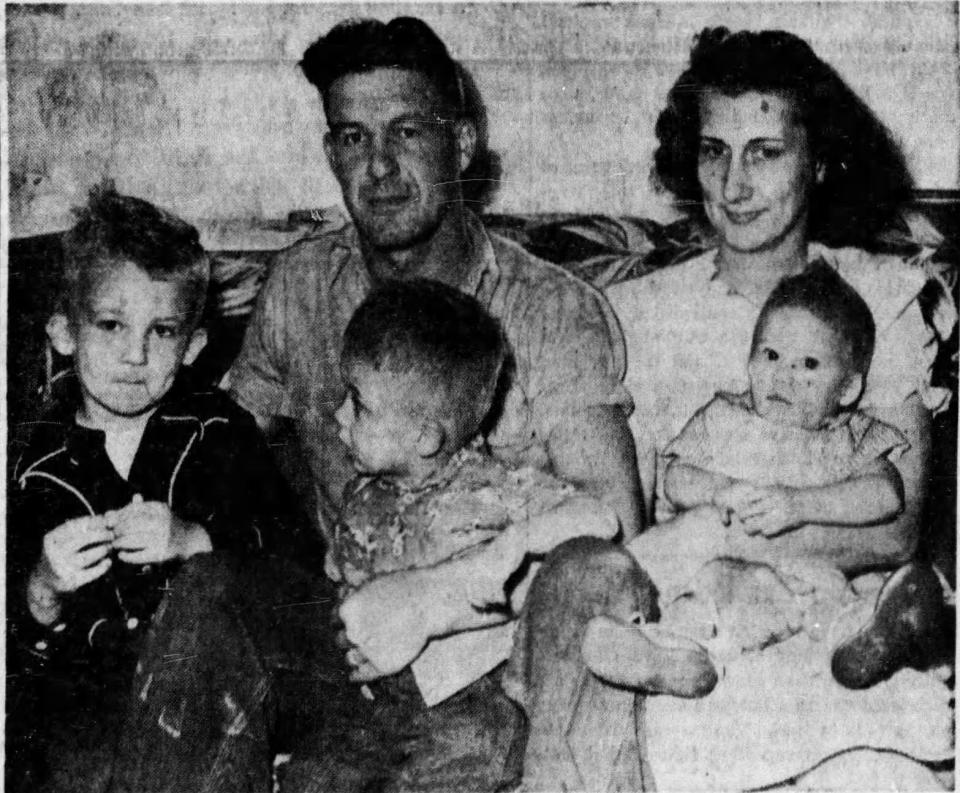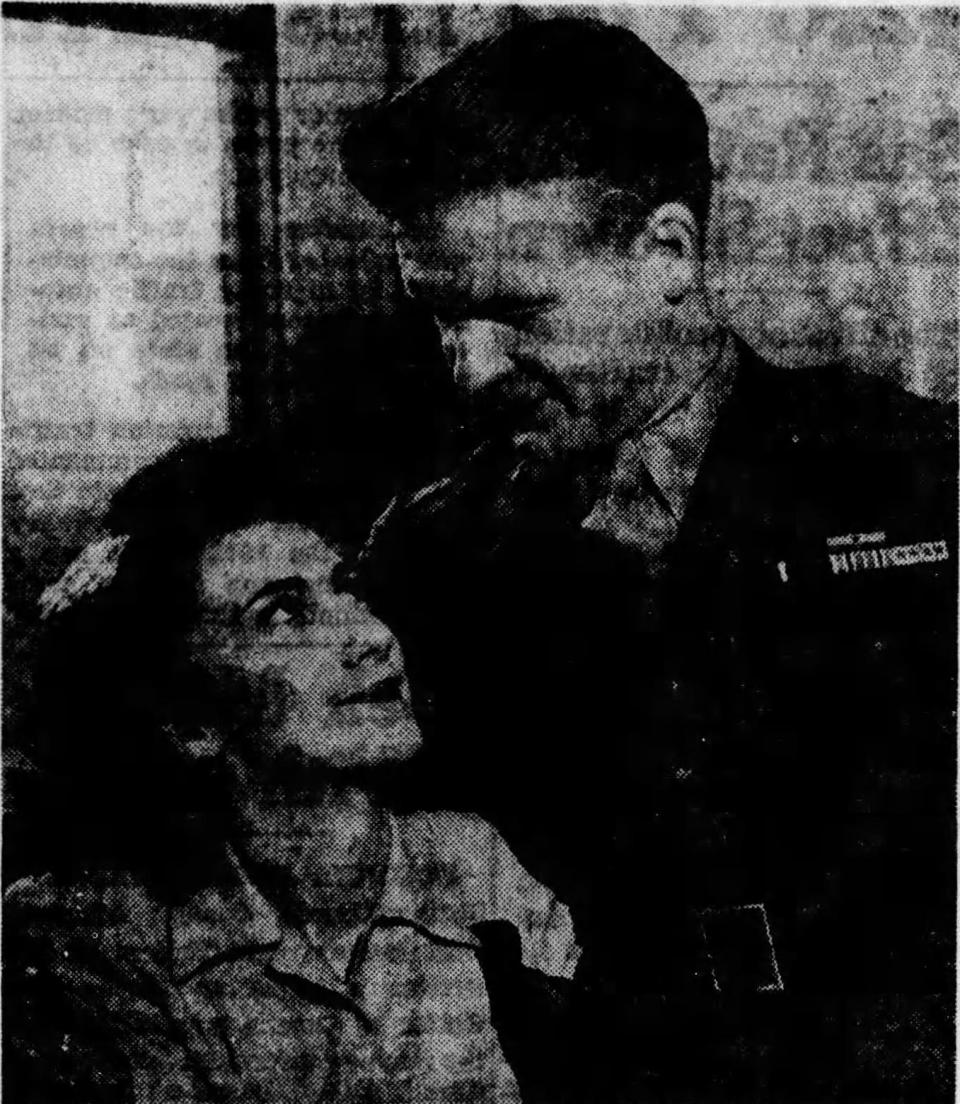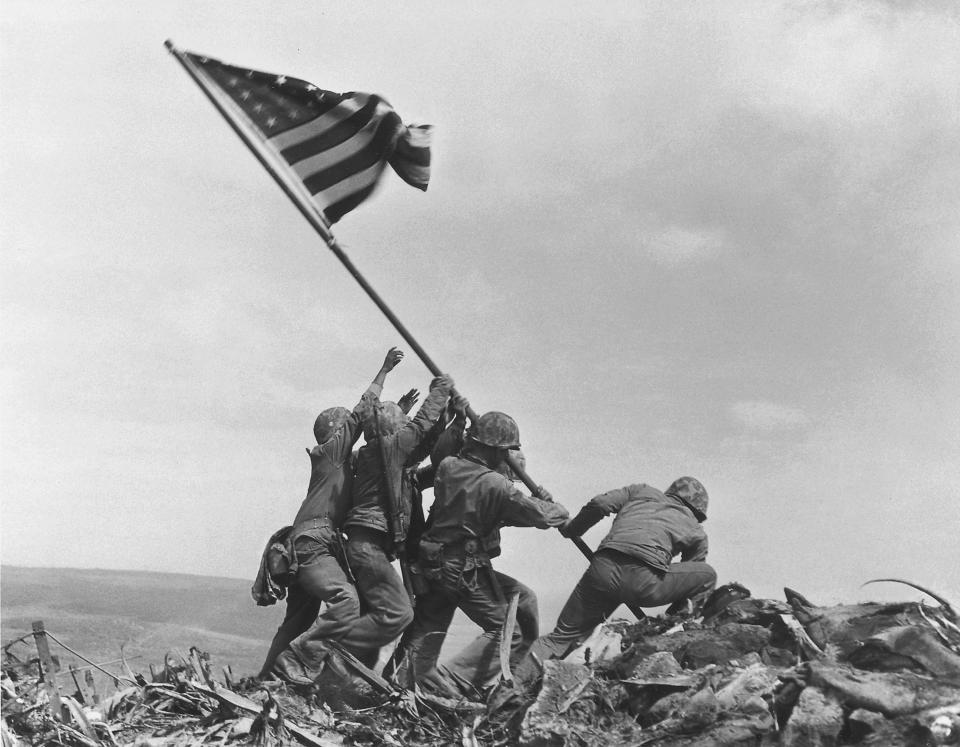Meet the Marine the world just learned helped raise the flag at Iwo Jima in World War II

DES MOINES - Six Marines raised the U.S. flag atop Mount Suribachi to let enemies and allies alike know the island of Iwo Jima was won on Feb. 23, 1945.
Photographer Joe Rosenthal captured the image of the men raising the flagpole with the wind whipping the Stars and Stripes at its peak after a five-week battle for the island between U.S. and Japanese forces for the island in the Pacific theater of World War II.
The photograph became one of the most famous of the war, a symbol of the U.S. armed forces' against-all-odds mentality.
Last week, the world learned that one of the Marines in that iconic image was an Iowan: Cpl. Harold "Pie" Keller of Brooklyn, Iowa.
"I was shocked when they contacted me to tell me one of those Marines was my dad," said Kay Maurer, one of Keller's three children, who lives in Clarence. "I knew my dad was there, but he never said anything about being in that picture. He rarely talked about the war at all."
'He didn't tell us he helped raise the flag': Marine Corps says another WWII hero misidentified in iconic, flag-raising Iwo Jima photo
A correction 74 years in the making
For 74 years, Keller had been misidentified as Cpl. Rene Gagon in the photograph until the Marines announced the correction earlier this month.
Amateur historian Brent Westemeyer, a Johnston man who works for Wells Fargo, worked with Marine archivists and others to identify the error.

"The Marines really dug into their archives and looked at some images that have never been published," Westemeyer said. "We matched the creases in the fabric on his helmet, how many grenades he was carrying, his bandiliers and his camouflage pattern. It took a lot of digging, but we got it right."
Keller's correction marks the third change in the official identifications of the six men who held that flag. Cpl. Harlon Block was misidentified as Sgt. Hank Hansen until 1947. Cpl. Harold Schultz was misidentified as Hospital Corpsman John "Doc" Bradley until 2016.
The other men in the photo are Pfc. Franklin Sousley, Sgt. Michael Strank and Cpl. Ira Hayes.
Block, Strank and Sousley were killed in action while fighting to hold the island.
Maurer and Westemeyer, like the Marines, are quick to note that the while the identities of the men raising the flag are historically significant, the true meaning of the photograph is shared among all the fighting forces who endured one of the bloodiest and most horrific battles of World War II.
Why they called him 'Pie' Keller
But Harold Keller is a man Iowans should know.
Keller was born in Brooklyn and, except for his war service, lived his entire life there. His father worked at a car dealership, and his mother worked at a grocery store.
Keller delivered the Register and the defunct afternoon paper, the Tribune, as a boy.
While a high school football player, Keller earned the nickname "Pie" because he ate too much pie before a game and threw up on the field in front of the crowd.
"The name stuck throughout his life," Maurer said.
Keller worked as a telephone company linesman before the Japanese attacked Pearl Harbor on Dec. 7, 1941. He enlisted Jan. 2, 1942, training at Camp Elliott in San Diego and in Honolulu.
Keller was assigned to Carlson's Raiders, an elite amphibious Marine united named for Evans Carlson, who developed tactics that became the basis for modern U.S. special forces operations.
Growing up in combat
In less than eight months, Keller went from an 18-year-old from an Iowa town of about 1,400 to landing at Guadalcanal at the beginning of the Allied offensive in the Pacific.
The battle lasted more than six months. Some 1,600 U.S. forces were killed, 4,200 were wounded, and several thousand died from tropical diseases.

Keller fought at Midway Island and Bougainville.
At Bougainville, Keller engaged in a sniper duel with a Japanese soldier. A Japanese slot burned through Keller's right shoulder.
"He was up a tree and I was looking for him — but he saw me first," Keller told the Des Moines Tribune in 1944. "I had fired eight rounds and was firing again when he hit me. I never did see him."
Keller dropped to the ground and laid low until the fighting paused. He was out of action for some time.
Historic discovery: Researchers find second warship from WWII Battle of Midway
He took a furlough in 1944 and came back to marry Ruby O'Halloran, a county sales supervisor for the Register and Tribune. He was 22. She was 26. The couple exchanged vows at the Kirkwood Hotel in Hartwick.
Keller declined to talk in-depth about his war experiences in an interview with a Tribune reporter, but he offered this glimpse into his war experiences:
"You don't think about it when you're in it," Keller said. "If you did, you'd probably be put in a straitjacket before long. Some of your experiences are so fantastic that people wouldn't believe them, anyway. Usually, it sounds like a lot of baloney, although true."
Battle yielded 26 medals in 45 minutes
The worst of the war was yet to come for Keller. He landed on Iwo Jima at the base of Mount Suribachi. He was part of a 40-man platoon that earned 26 medals in 45 minutes — most of them Purple Hearts.

Iwo Jima was home to a pair of critical airfields. Capturing the island gave Allied forces key launching points for attacks on the main Japanese island.
But the campaign proved to be one of the fiercest and bloodiest in the Pacific Theater. Some 6,821 U.S. forces were killed and another 19,217 were wounded.
Estimates of Japanese casualties are as high as 18,400.
The battle proved especially difficult: U.S. forces gained ground during the day, but Japanese forces would escape through a network of tunnels and return to battle the same spot the following day.
Though Rosenthal's Feb. 23, 1945, photo was emblematic of victory, it would not be until March 26 that the battle was declared won and the island safe for occupation.
The warrior comes home
Keller survived the war and returned home to his love, Ruby. The couple had three children — two boys and a girl.
Keller went back to work for the phone company for a while and then took a job at a local creamery. When the creamery closed, he worked at an electrical equipment firm.
Keller served as head of Brooklyn High School's athletic boosters, chief of the city's volunteer firefighters and was a beloved fellow about town. When the family built a new house, people from all over would stop by to help out, according to a 1950 Tribune story.
Keller died of a heart attack in 1979. He was 57.
He remained silent on his war experiences.
He rarely spoke with family about the war, and when he did, it was in general terms, talking about a buddy or a military term.
Daughter Kay tried to draw out his stories over the years, to no avail.
"The Vietnam War was on TV every night, and I would try to use that as a springboard, but he wouldn't budge," Kay Maurer said.
An author once sent Keller a tape recorder and asked him to record his memories. He would do it late at night when the kids were in bed. Young Kay would try to listen. After a while, her father would press stop on the recorder.
"He'd say, 'Katie, I know you're there. Go on to bed,'" Maurer said. "He didn't want me to hear. ... I think he just wanted to put it all behind him. I think he just wanted to be 'Pie' Keller from Brooklyn, Iowa."
Follow Daniel P. Finney on Twitter: @newsmanone
This article originally appeared on Des Moines Register: 74 years later, Marine identified raising flag in famous Iwo Jima photo

